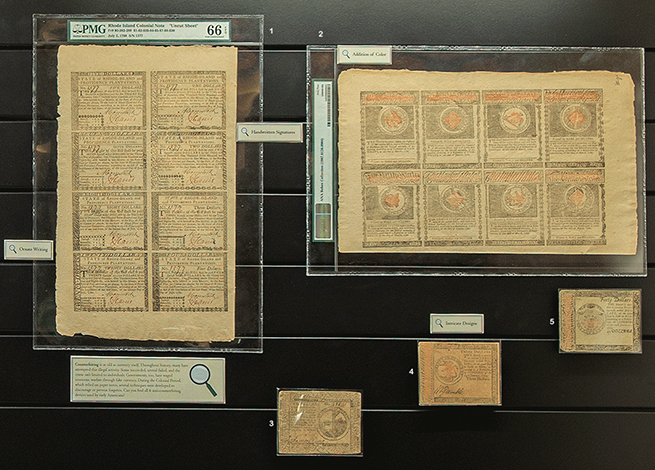
INTRODUCTION
Paper money has a unique place in U.S. history. British North America’s lack of silver and gold, combined with English export restrictions on bullion and coins, forced colonists to get creative. At one time or another, tobacco, nails, beaver pelts and other commodities were all used as alternative forms of money. In 1690, the Massachusetts Bay Colony authorized the first paper money in North America – the first government-issued currency in the West! Other colonies soon followed suit. Despite British attempts to suppress its use, paper currency became commonplace by necessity.
Following that precedent, the Continental Congress and state governments issued paper currency to pay for the Revolution. Unfortunately, Continental dollars were over-issued, and without hard-currency to back them, their value quickly collapsed as public confidence waned. Indeed, more than a decade after Revolutionary victory, Continental notes were redeemed for treasury bonds at just one percent on the dollar!
Did You Know?
Loans from the Dutch and French governments saved Continental Dollars from becoming totally worthless!
Click on the items in the case image below for an enhanced view
The late 17th century saw the rise of government-issued paper money in the North American Colonies. Issued in the familiar British pounds (£), shillings (s), and pence (d), their value varied by colony, and none of the colonial currencies equaled the British original! The disparity in value made intra-colonial business cumbersome, though some colonies coordinated to synchronize the values of their money.
At the start of the American Revolution, Congress issued new Continental Currency to pay for the war. “Continentals” were denominated in Spanish dollars, the most commonly available hard currency, but quickly lost their value versus the coinage. Congress issued $241,552,780 worth of Continental notes that quickly began to depreciate as the war raged. By 1778, their value fell to 1/5 – 1/7 of their printed denominations. Devaluation took them to 1/40 of their face by 1780, and they ceased to circulate by 1781. Their final redemption rate was set at 1% of face in the 1790s.
